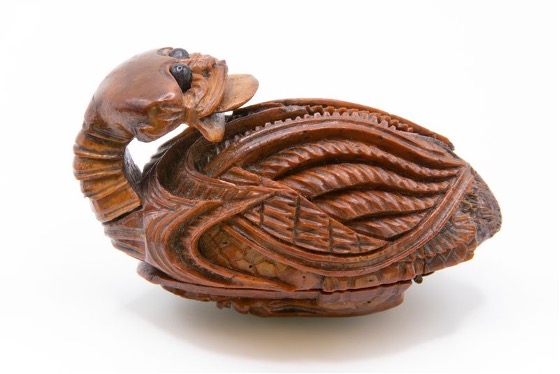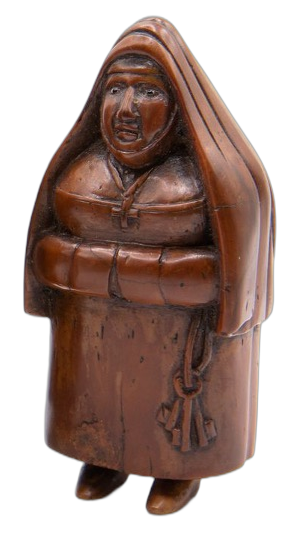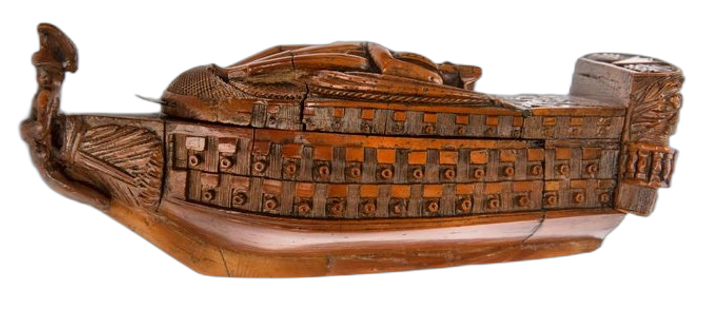Q&A with Collector David Badger
DB: My interest in snuff boxes and snuff bottles had its genesis in my love of wood, especially old wood: its grain, its patina, its warmth, its smooth feel to the touch. Though a nut is not technically wood, it has many of the attributes of wood coupled with a uniquely shiny patina.
My first exposure to snuff boxes occurred in London when I moved there in 1968. 18th and 19th century snuff boxes in the shape of little shoes were to become my first collection of wooden objects, many of which were pewter inlaid. Countries of origin included England, the Netherlands, and France. Some were known to be made by prisoners of war; others by those interested in having and displaying an object which was associated with the joy of seeing a ladies shoe peaking under the bottom of a long skirt
When I first held a coquilla nut snuff box, its shine and patina, its hardness and its intricate carvings had a great appeal to me and motivated my buying the first few that were offered to me. After that, I bought virtually every one that I came across: in England, in France, in the Netherlands, in the United States, in Australia … wherever.




